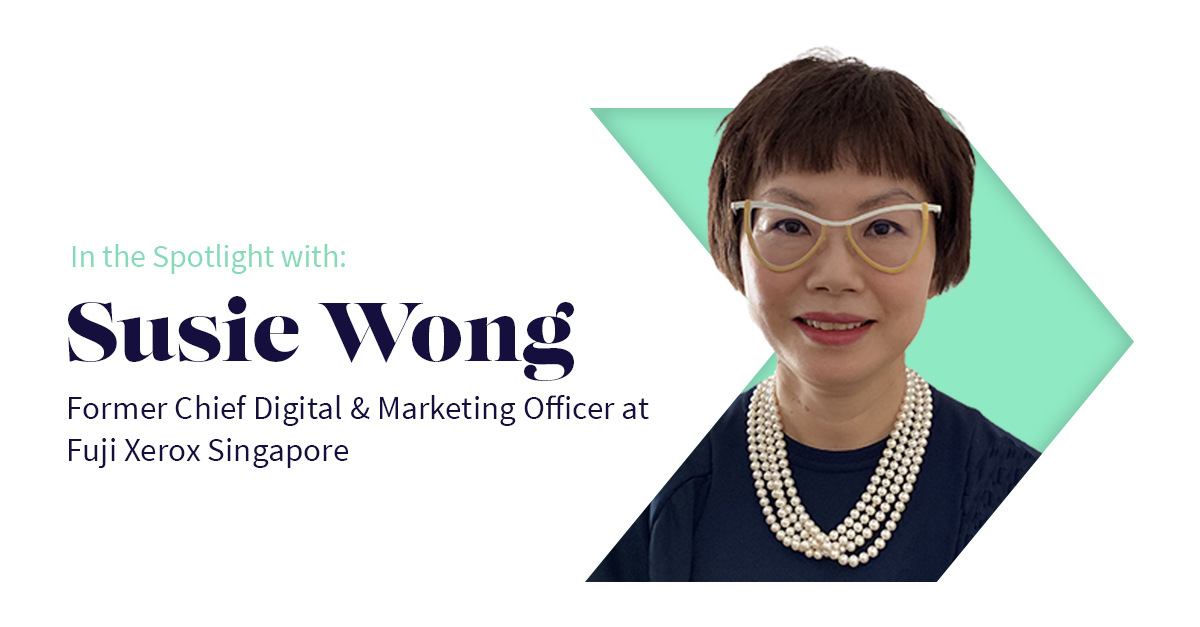2 min read

In the Spotlight: Susie Wong
In the Spotlight sees leading B2B thinkers delve into the latest trends, examine the changing marketing landscape, and put forward their visions for the future.
Marketing never stands still. If anything, change is accelerating as technological advances create new ways of understanding, connecting, and interacting with today’s consumer. Safe to say that since Susie Wong began her career in the 1990s, eventually helming leadership roles at IBM and Fuji Xerox Singapore, she has overseen a world of change.
Here she shares lessons learnt, how exactly marketing has evolved, and the B2B trend that doesn’t quite make sense.
Biggest lesson you’ve learnt in your career.
When I was missioned to transform a marketing organisation to be more customer and data centric, I thought to myself: this isn’t rocket science. I know where we need to go and how to get there. But six months later, we were spinning on our wheels. The team was struggling with clarity, responsibilities, and deliverables.
Then, the penny dropped. Throughout every conversation, I realised I was listening with my mind and processing with my brain. Not with my heart. Missing what is not said, non-verbal cues, emotional undertones. That was my single biggest learning in empathetic leadership: listening with not just the mind but also with the heart.
How to distil problems into a single objective.
Whenever I get confused or distracted, I take a step back. What’s the purpose of this meeting, what problem are we actually trying to solve? Individuals of course can derail the conversation, though it may not be intentional. So, it’s important to take a step back and see the forest for the trees.
Marketers have to be great storytellers. One key tip for delivering presentations.
Nobody is born a great speaker. Invest time and effort to rehearse, and I guarantee you’ll see results. The question is if people want to set aside the time it takes. When presenting, I see the difference in myself if I over or underprepare. Even if I know the subject well, it’s still important to script and create a narrative, so that I can be concise and sharp in what I’m trying to deliver.
Differences in marketing today from when you first started.
Since the 1990s, marketing has changed across four lenses:
- Audience: customers were segmented based on demographics and conceptually with psychographics, which was not exactly executable. Versus today, where we look at behavioural intent marketing.
- Media channels: digital didn’t quite exist in the 90s. Above the line, we looked at broadcast media like Print and TV, and below the line direct marketing through mail houses.
- Customer journeys: previously, journeys were more sequential, more of a one-way dialogue. Versus today’s omnichannel interactions and engagements.
- Content: in the 90s, content was much more limited. Versus today, where it’s much more dynamic and customised at scale.
B2B marketing trend you don’t really understand.
How AI is teaching workers to be more human.
The story goes that with the pandemic, there has been a rise in stress among call centre staff. Consequently, this leads to a certain level of disassociation when staff come into contact with customers. AI is then deployed to cue workers and remind them to be empathetic with customers—how bizarre is this?
Psychologists looked into what caused this disassociation between staff and the customer. Working longer hours was found to be a primary cause. So rather than making workers do 12-hour shifts, would it not make sense to help staff be “more human” by letting them work shorter hours?
What’s coming next could feature you. Get your story heard by reaching out to B2BNXT.
Related content









